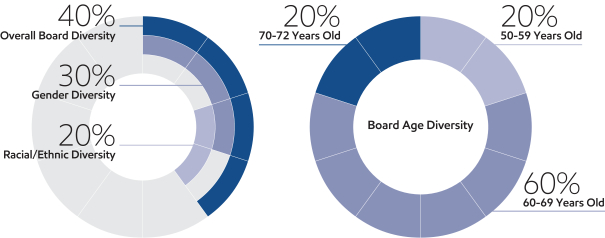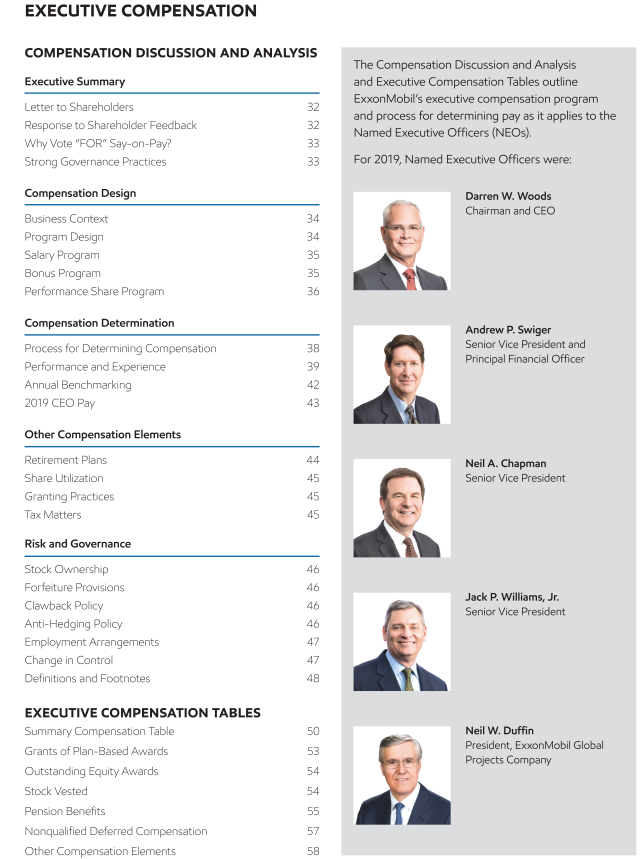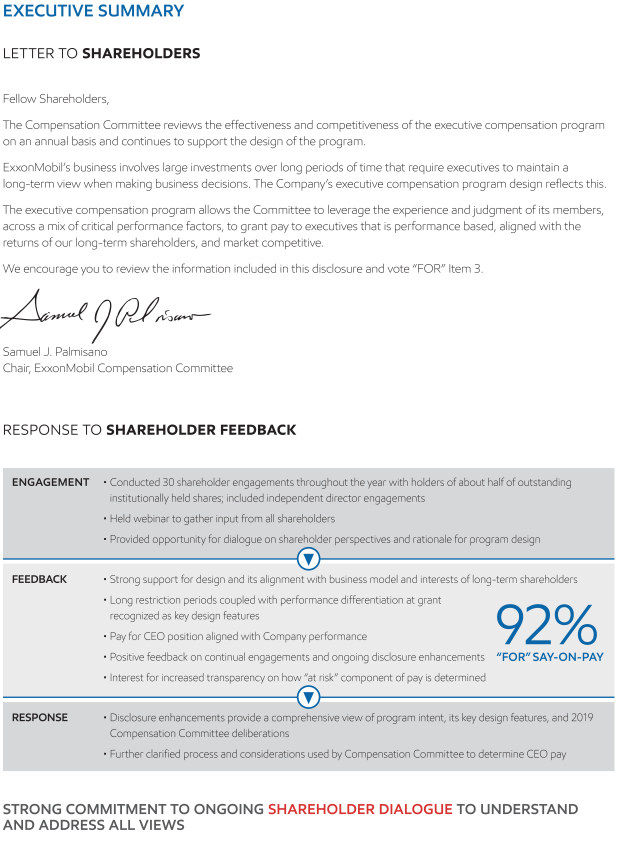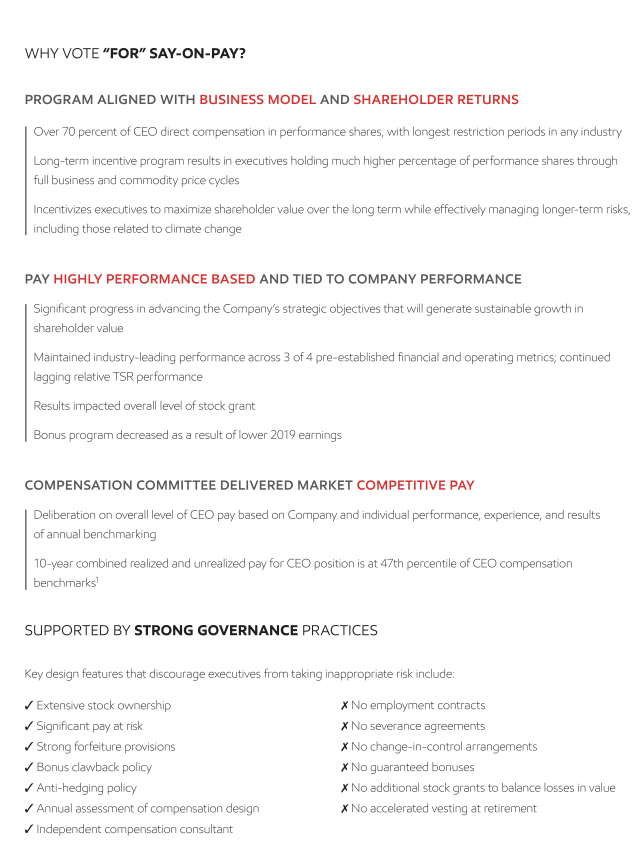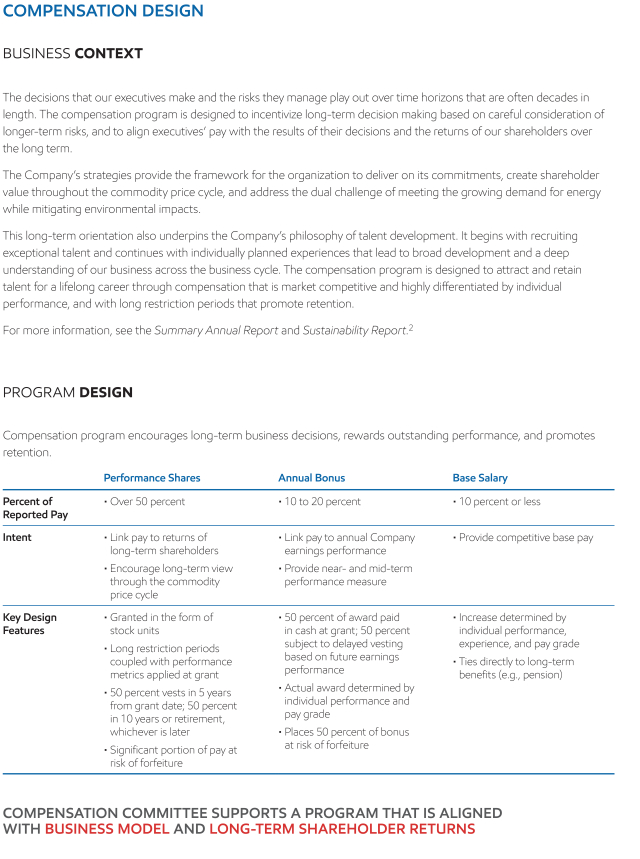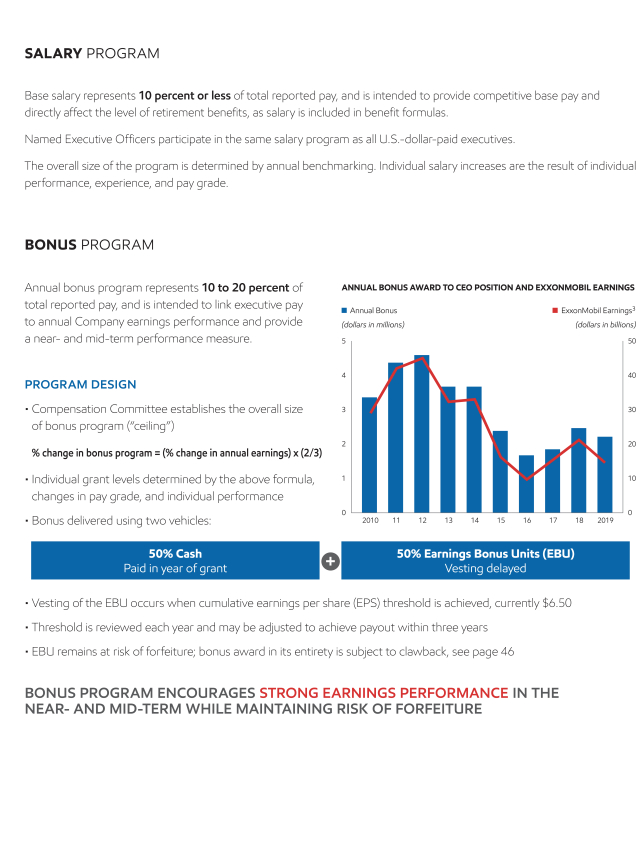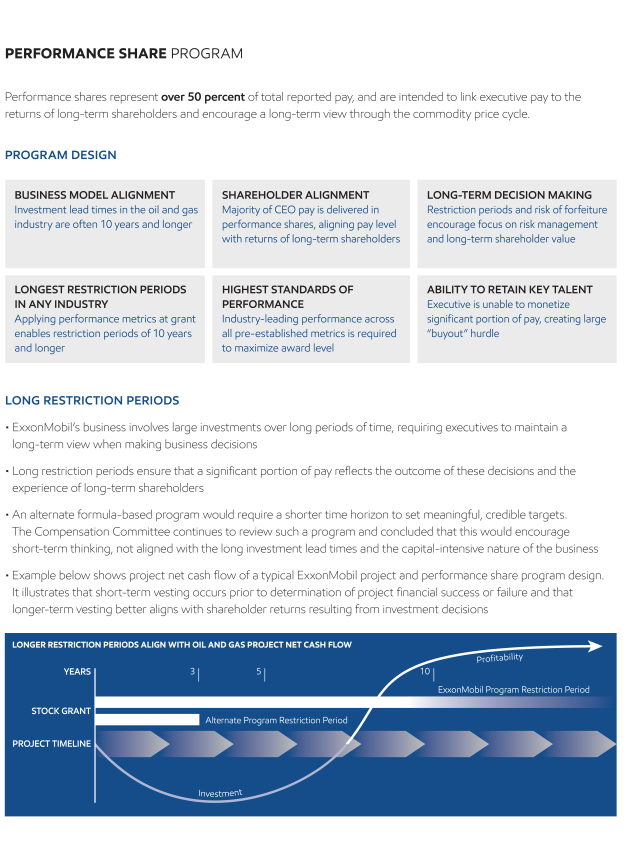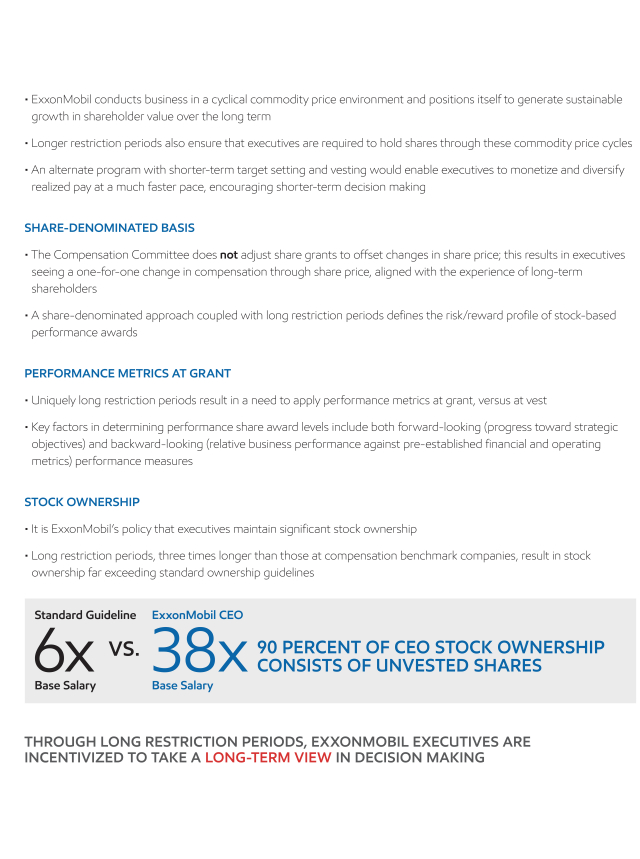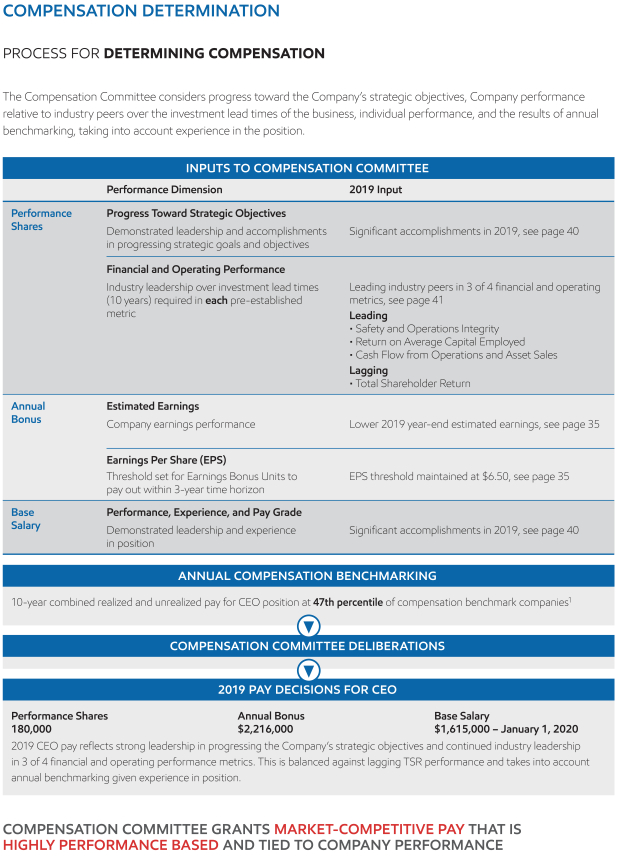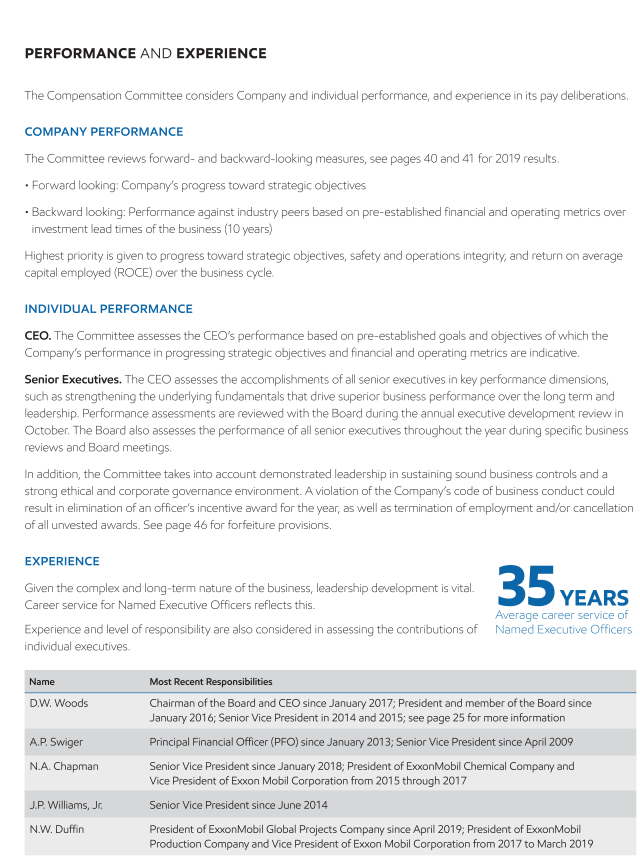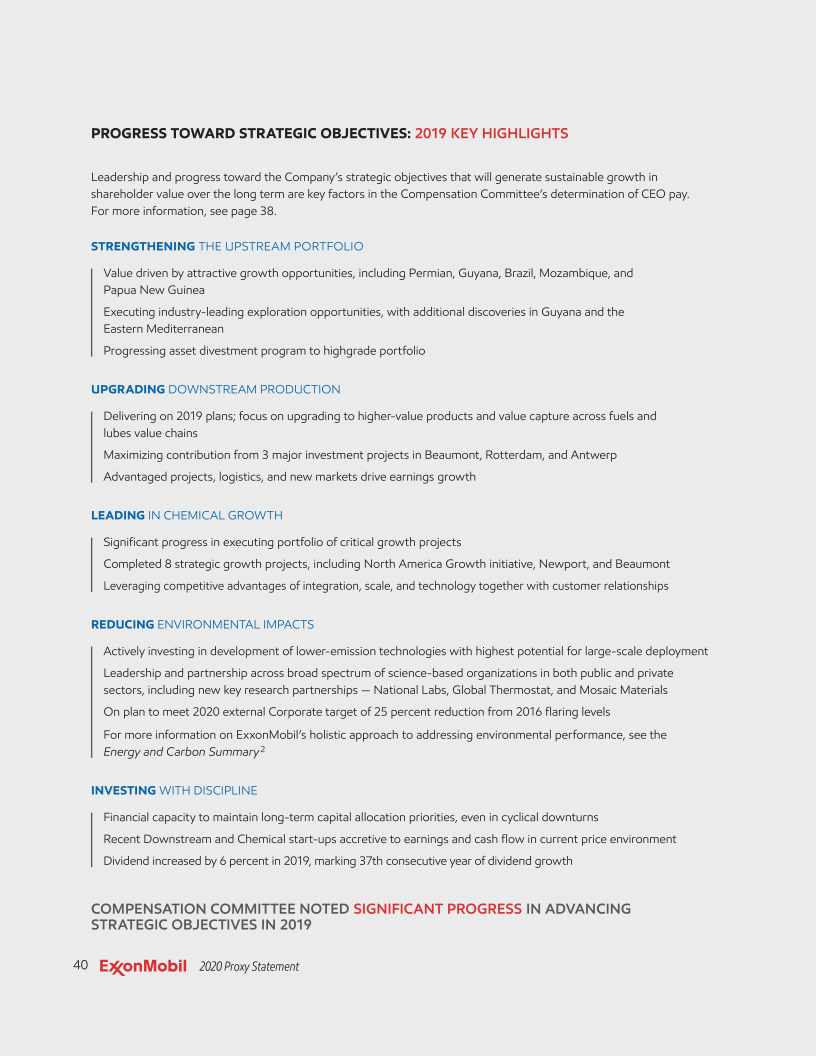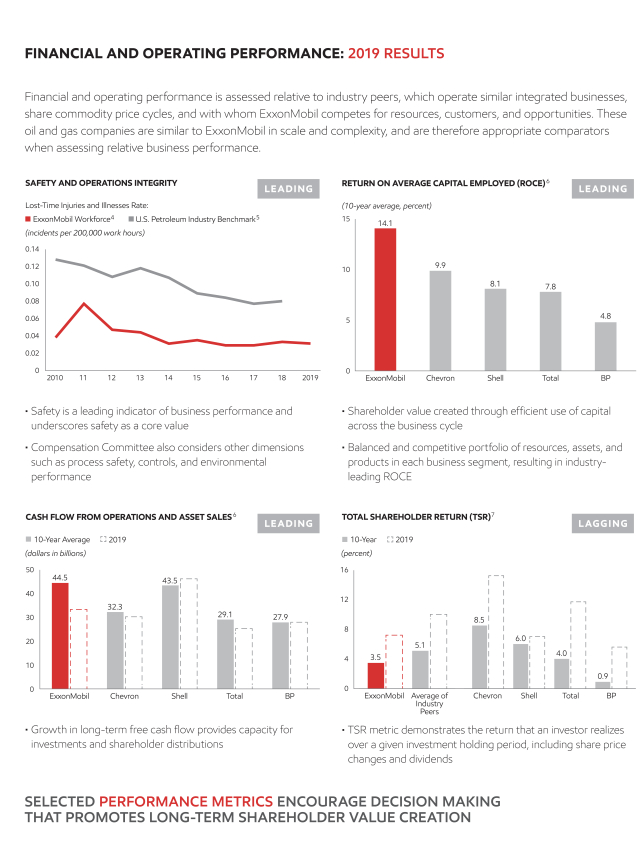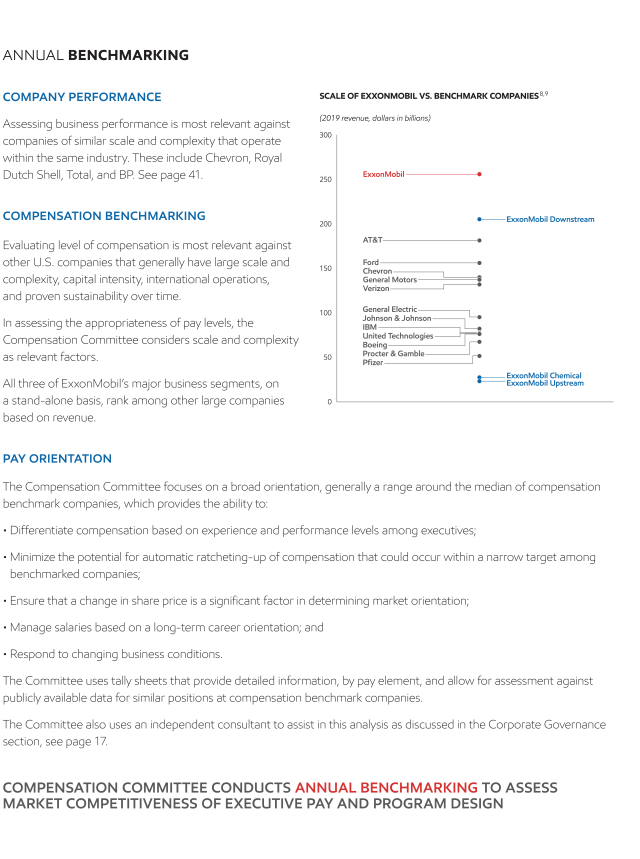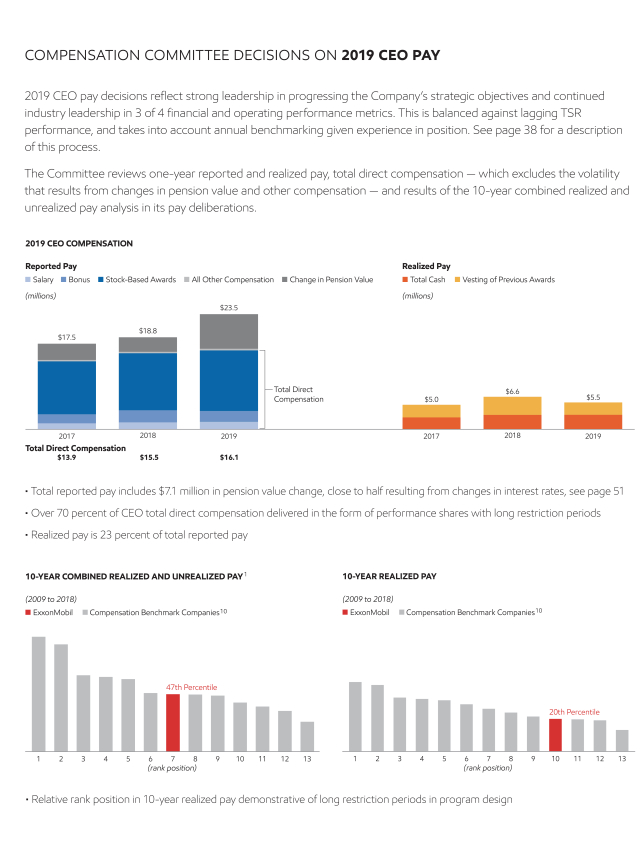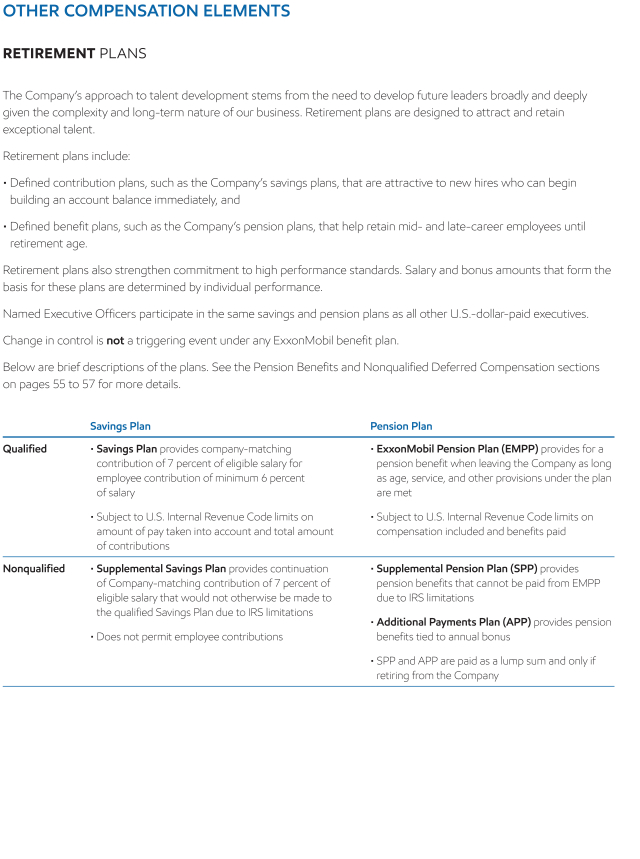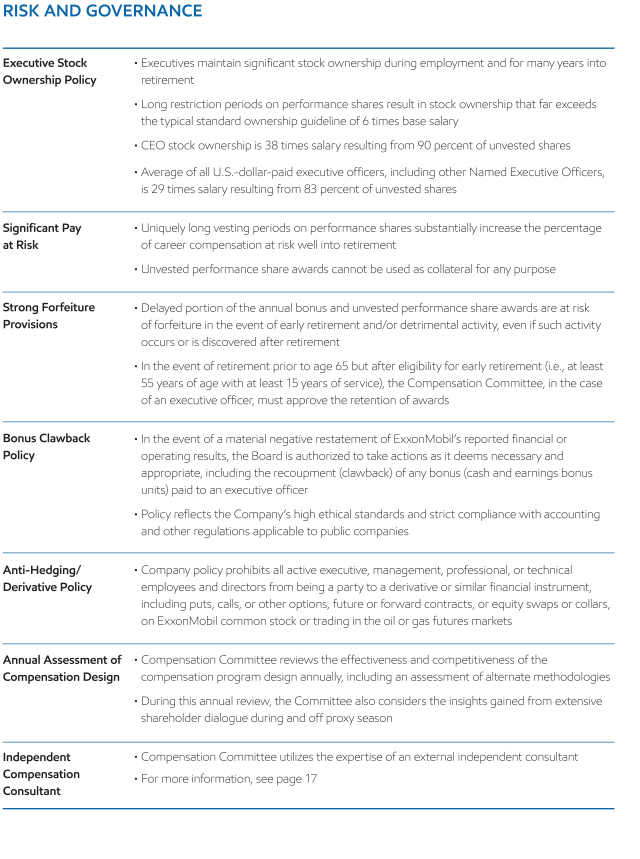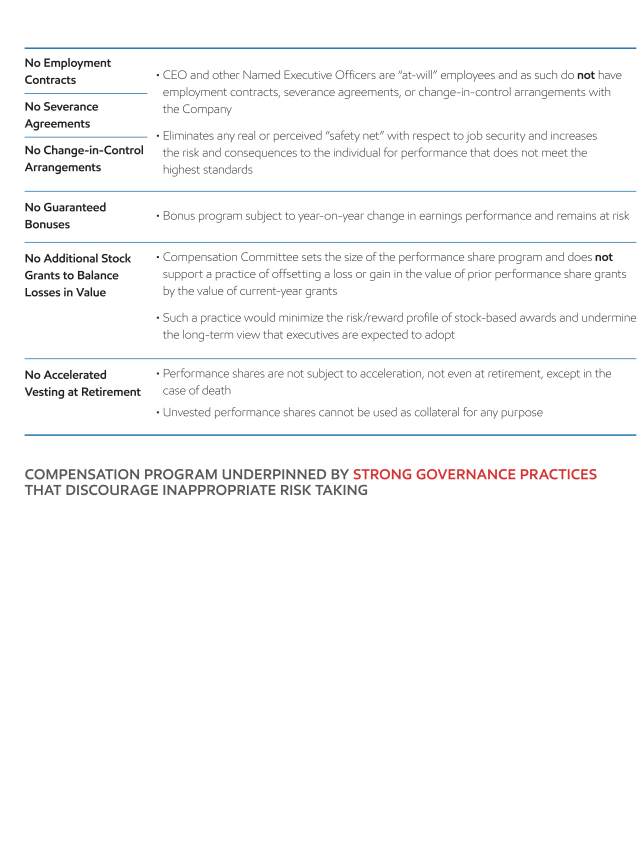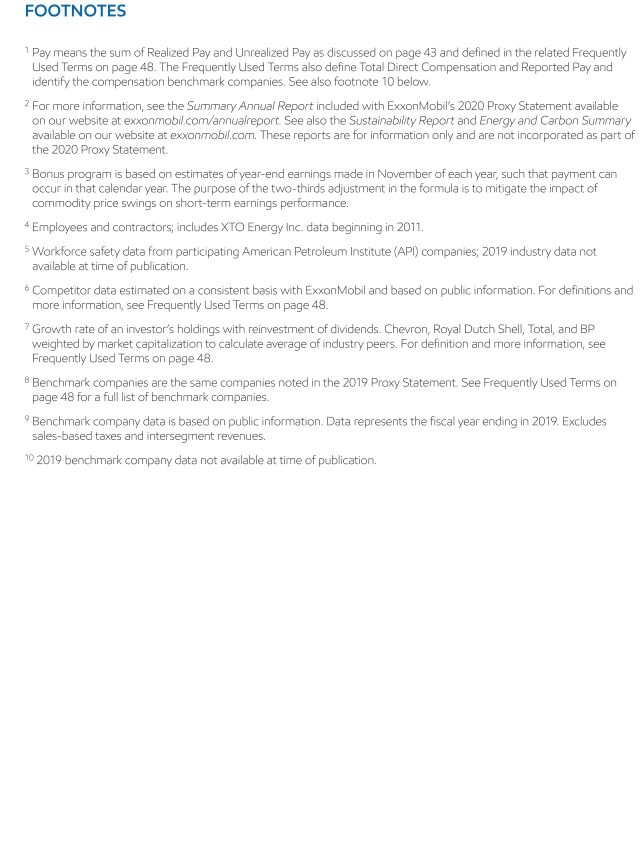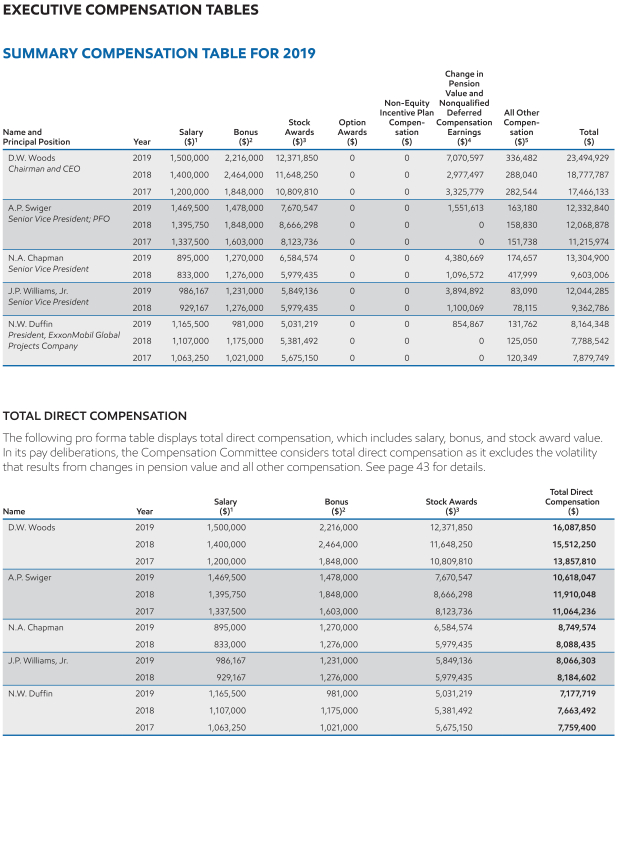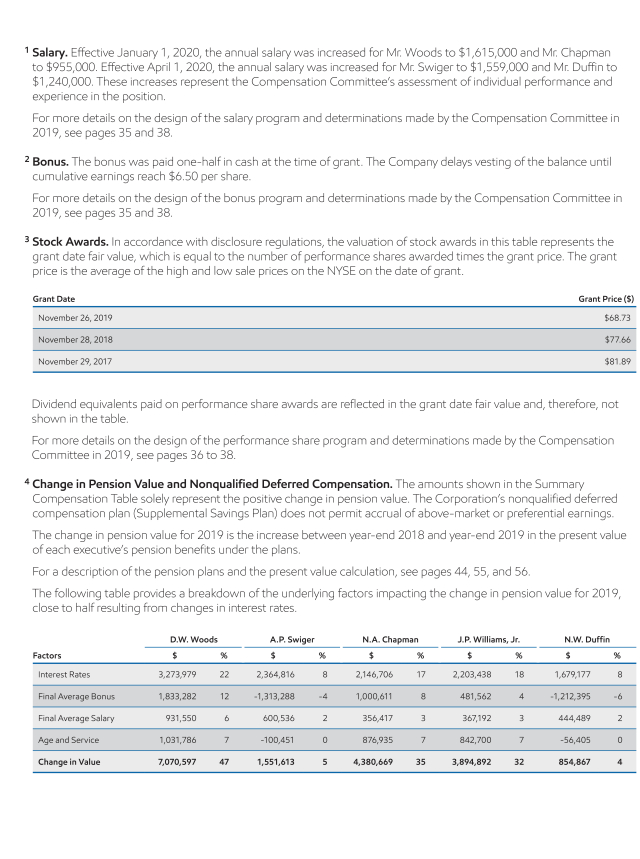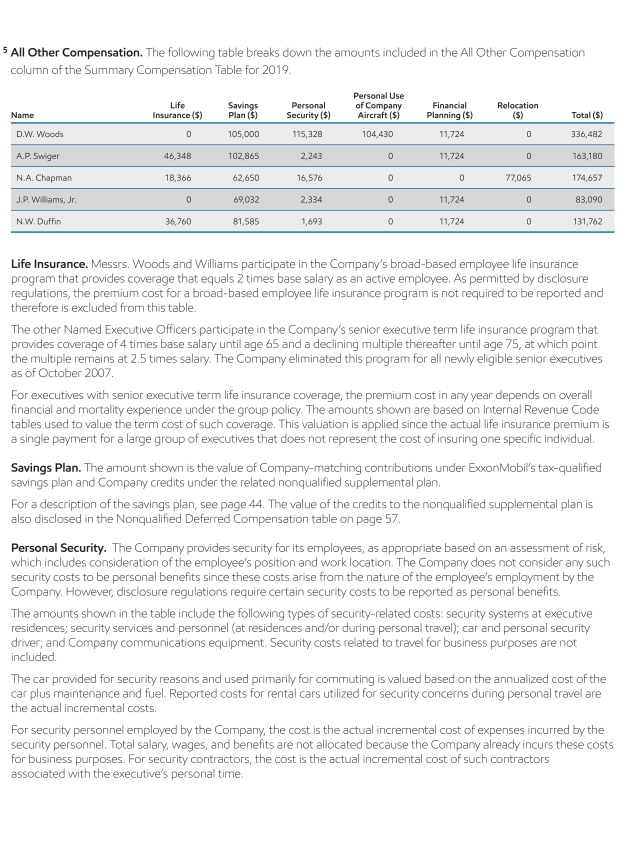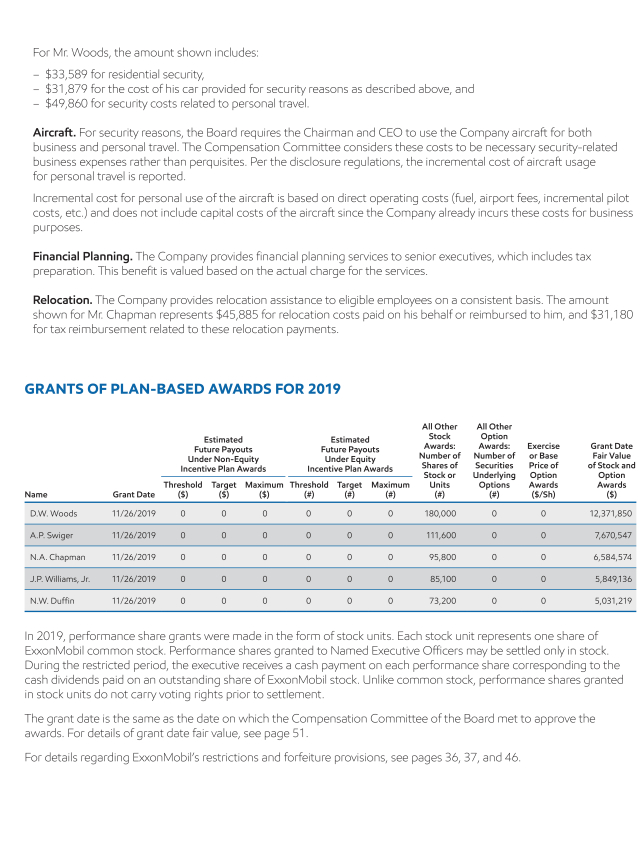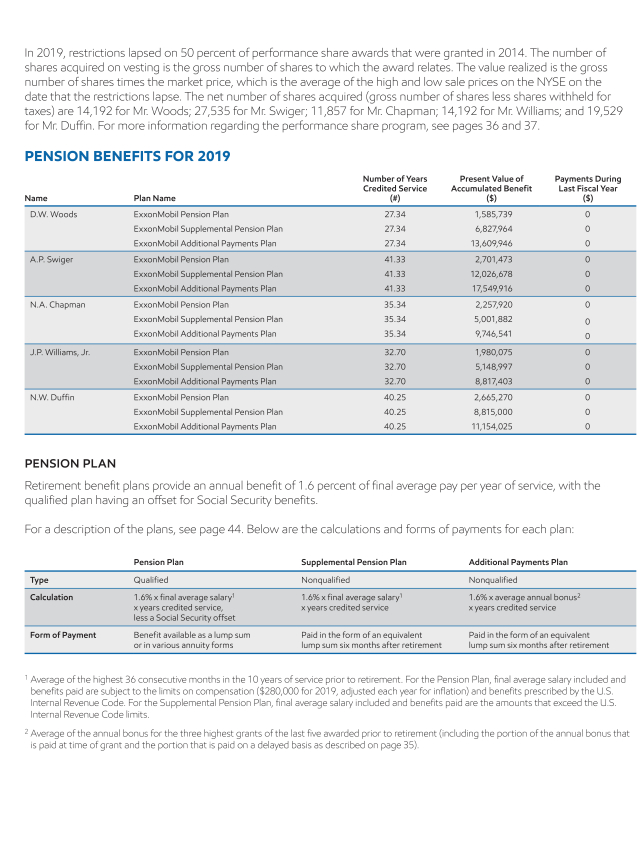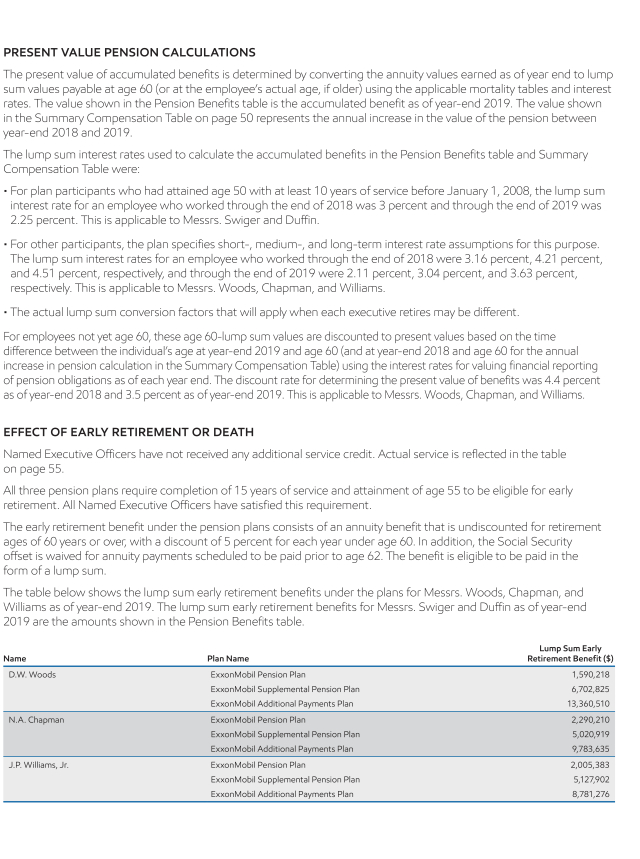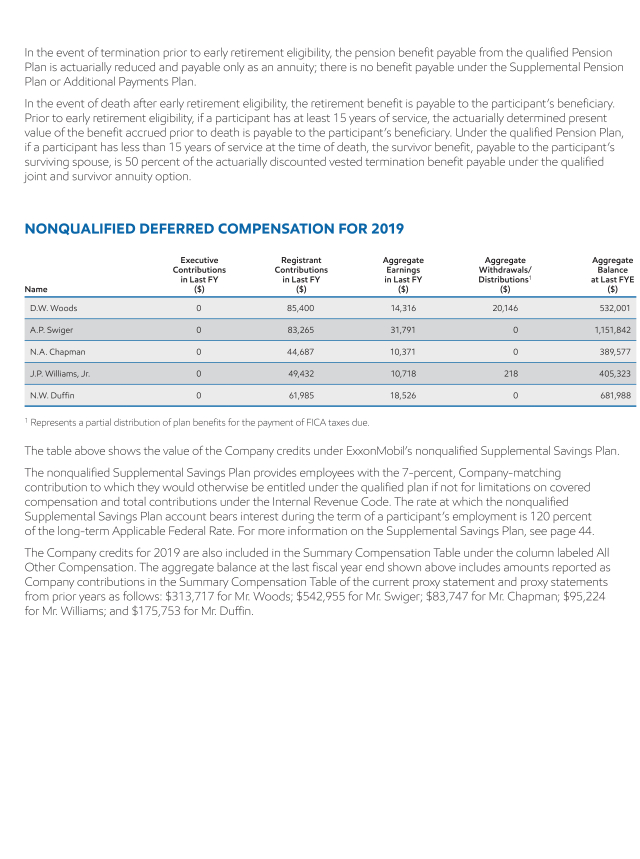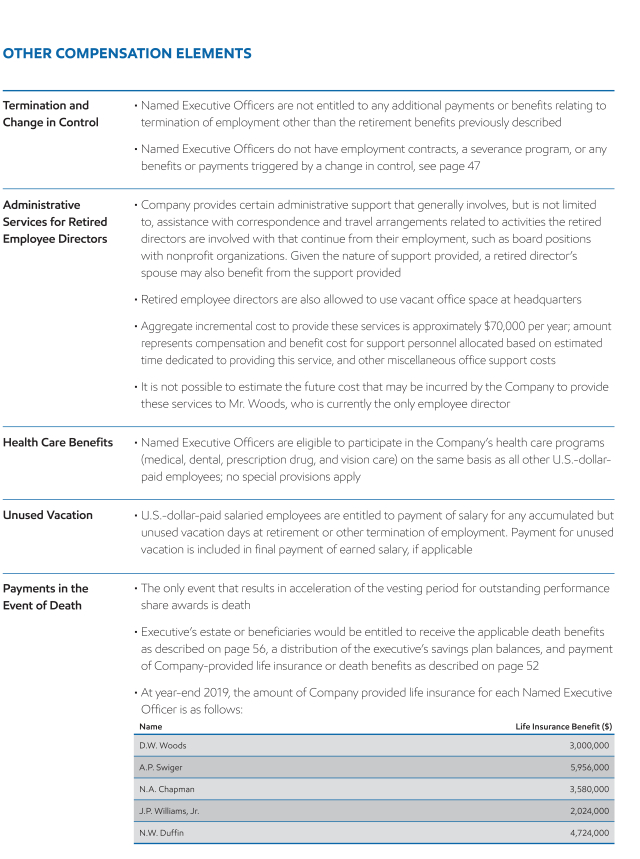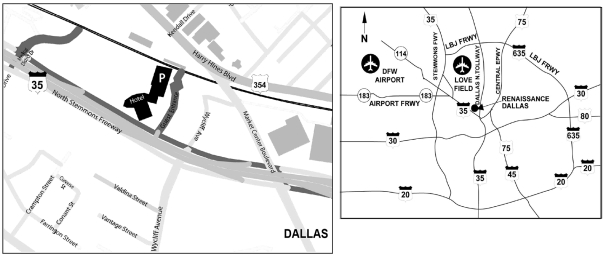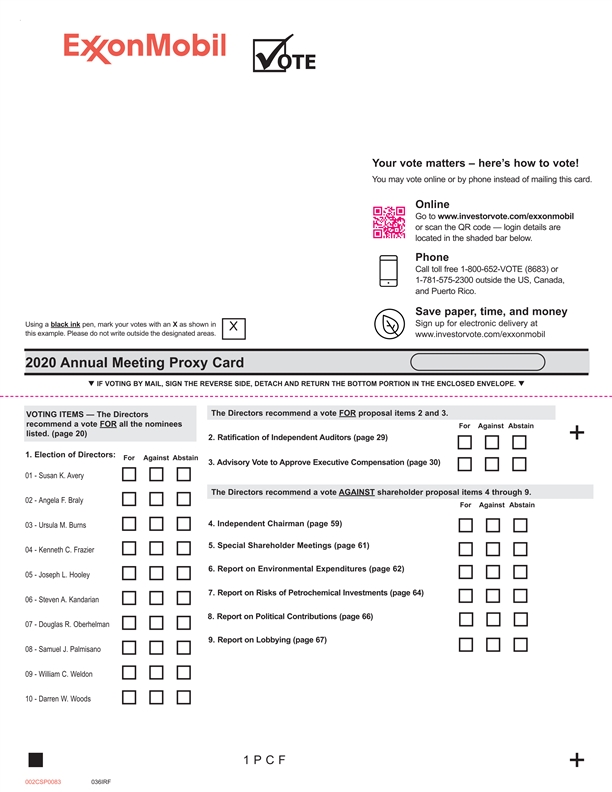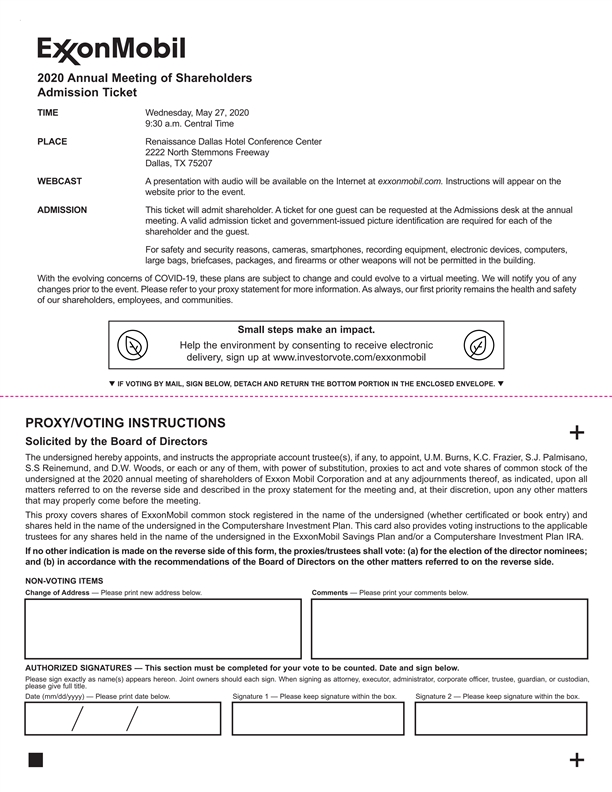| Notice of 2020 Annual Meeting and Proxy Statement |
| |||
| April 9, 2020 | ||||
Dear Shareholder:
We invite you to attend the annual meeting of shareholders currently scheduled on Wednesday, May 27, 2020, at the Renaissance Dallas Hotel Conference Center, 2222 North Stemmons Freeway, Dallas, Texas 75207. The meeting will begin promptly at 9:30 a.m. Central Time. With the evolving concerns of COVID-19 and public health authority recommendations, these plans are subject to change and could evolve to a virtual meeting. We will notify you of any changes prior to the event and provide the latest status on the Investor Relations section of our website at exxonmobil.com/investor. As always, our first priority remains the health and safety of our shareholders, employees, and communities.
At the meeting, you will hear a report on our business and vote on the following items:
| • | Election of directors; |
| • | Ratification of PricewaterhouseCoopers LLP as independent auditors; |
| • | Advisory vote to approve executive compensation; |
| • | Six shareholder proposals contained in this proxy statement; and |
| • | Other matters if properly raised. |
Only shareholders of record on April 2, 2020, or their valid proxy holders may vote at the meeting. Attendance at the meeting is limited to shareholders or their proxy holders and ExxonMobil guests. Only shareholders or their proxy holders may address the meeting.
This booklet includes the formal notice of the meeting and proxy statement. The proxy statement tells you about the agenda, procedures, and rules of conduct for the meeting. It also describes how the Board operates, gives information about our director candidates, and provides information about the other items of business to be conducted at the meeting.
Financial information is provided separately in the booklet, 2019 Financial Statements and Supplemental Information, enclosed with the proxy materials or made available online to all shareholders.
Your vote is important. Even if you own only a few shares, we want your shares to be represented at the meeting. You can vote your shares by Internet, toll-free telephone call, or proxy card. A Summary of 2020 Proxy Voting Results will be available at exxonmobil.com after the annual shareholders meeting.
To attend the meeting in person, please follow the instructions on page 6. An audio webcast and a report on the meeting will be available on our website at exxonmobil.com.
Sincerely,
|
|
| |||
|
Stephen A. Littleton Secretary |
Darren W. Woods Chairman of the Board |













 Audio Webcast of the Annual Meeting
Audio Webcast of the Annual Meeting 




